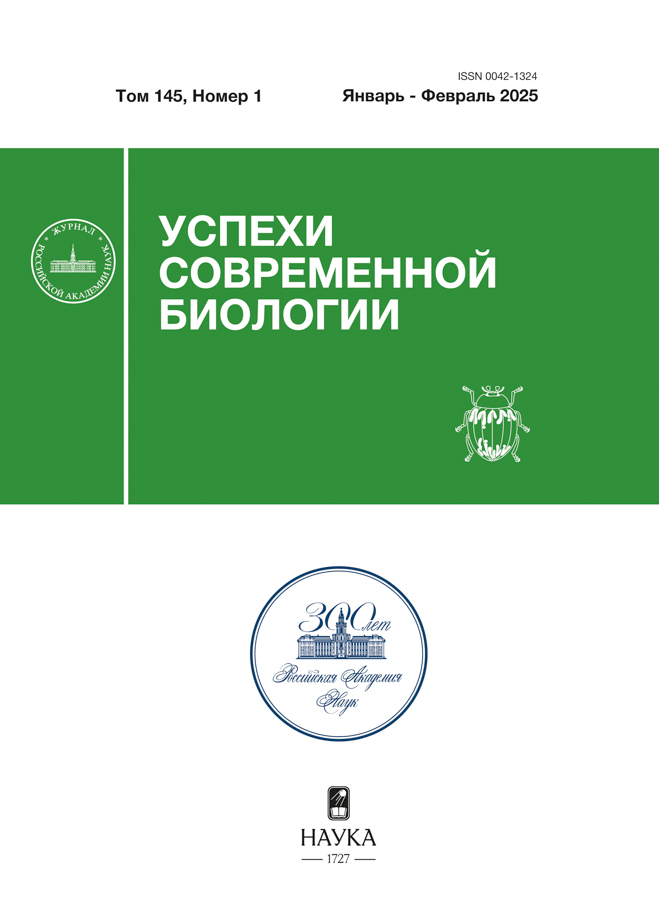Assessment of Exterior Indicators of Parental and Hybrid Forms of African Catfish Clarias gariepinus
- Authors: Klimuk A.A.1, Beketov S.V.2, Nikiforov-Nikishin A.L.1, Kochetkov N.I.1
-
Affiliations:
- Razumovsky Moscow State University of Technologies and Management (First Cossack University)
- Vavilov Institute of General Genetics, Russian Academy of Sciences
- Issue: Vol 145, No 1 (2025)
- Pages: 67-75
- Section: Articles
- Submitted: 27.06.2025
- Published: 01.06.2025
- URL: https://vietnamjournal.ru/0042-1324/article/view/686070
- DOI: https://doi.org/10.31857/S0042132425010069
- EDN: https://elibrary.ru/DMERSF
- ID: 686070
Cite item
Abstract
This article presents a comparative study of morphometric exterior parameters of African catfish Clarias gariepinus of parental forms (Mikhailovskaya and Taman breeds) with their hybrid offspring of the first two generations and one second generation. Nonparametric analysis (U Mann–Whitney criterion) revealed significant differences between the average values of the five samples for 12 of 17 morphometric measurements. It was found that hybrid individuals of the first and second generations have a different exterior phenotype from the parental one and are characterized by an elongated body, an elongated tail and a large head size. In the course of the subsequent principal components analysis two large clusters were revealed, the first of which was formed by individuals of the parental groups (Mikhailovskaya, Tamanskaya), and the second was formed by hybrid generations. In this case, the hybrid individuals formed a rather heterogeneous group, in which the F1 hybrids of the first and second generations were similar and sufficiently consolidated. The individuals of the first generation, selected by the “growth rate” trait, demonstrated significant variability. The results show that the variability of the exterior indicators of the cultivated lines of C. gariepinus of the Mikhailovskaya and Tamanskaya breeds did not undergo significant changes during their isolated cultivation in conditions of a closed water supply cycle, and the hybrids obtained from their crossing, taking into account the higher average weight, are characterized by improved morphometric indicators and can be used to increase the yield of commercial products or in further selection programs for developing new breeds.
Keywords
Full Text
About the authors
A. A. Klimuk
Razumovsky Moscow State University of Technologies and Management (First Cossack University)
Author for correspondence.
Email: ord@mgutm.ru
Russian Federation, Moscow
S. V. Beketov
Vavilov Institute of General Genetics, Russian Academy of Sciences
Email: ord@mgutm.ru
Russian Federation, Moscow
A. L. Nikiforov-Nikishin
Razumovsky Moscow State University of Technologies and Management (First Cossack University)
Email: ord@mgutm.ru
Russian Federation, Moscow
N. I. Kochetkov
Razumovsky Moscow State University of Technologies and Management (First Cossack University)
Email: ord@mgutm.ru
Russian Federation, Moscow
References
- Климук А.А., Пономарев А.К., Калита Т.Л., Никифоров-Никишин А.Л. Опыт выращивания гибридов первого поколения африканского клариевого сома (Clarias gariepinus) при пониженных температурных режимах // Вестн. КГМТУ. 2024а. № 1. С. 20–28.
- Климук А.А., Сергазиева О.Д., Пономарев А.К. и др. Сравнение технологических характеристик гибридного потомства Clarias gariepinus с родительскими особями // Вестн. ВГУИТ. 2024б. № 2. С. 199–206.
- Курганский В. Африканский сом. Воспроизводство и выращивание клариевого (африканского) сома в установках замкнутого водообеспечения (УЗВ). М.: Litres, 2021. 42 с.
- Правдин И.Ф. Руководство по изучению рыб. М.: Пищ. пром-сть, 1966. 372 с.
- Britz P.J., Hecht T. Temperature preferences and optimum temperature for growth of African sharptooth catfish (Clarias gariepinus) larvae and postlarvae // Aquaculture. 1987. V. 63 (1–4). P. 205–214.
- Dunham R.A., Liu Z. Gene mapping, isolation and genetic improvement in catfish // Aquatic genomics: steps toward a great future. 2003. P. 45–60.
- Dunham R.A., Masser M.P. Production of hybrid catfish. Stoneville, Mississippi: Southern Regional Aquaculture Center, 2012. V. 436 (190).
- Fagbuaro O., Oso J.A., Olurotimi M.B., Akinyemi O. Morphometric and meristic characteristics of Clarias gariepinus from controlled and uncontrolled population from Southwestern Nigeria // J. Agric. Ecol. Res. Int. 2015. V. 2 (2). P. 39–45.
- Green B.W., Rawles S.D. Comparative growth and yield of channel catfish and channel × blue hybrid catfish fed a full or restricted ration // Aquac. Res. 2010. V. 41 (9). P. 109–119.
- Hogendoorn H., Jansen J.A.J., Koops W.J. et al. Growth and production of African catfish Clarias lazera (C&V) II. Effect of body weight, temperature and feeding level in intensive tank culture // Aquaculture. 1983. V. 34. P. 265–285.
- Jawad L.A., Farrag M.M.S., Park J.M. Interspecific and intraspecific differences in pectoral-fins spine morphology in Nile River and Lake Nasser catfishes, Siluriformes // Proc. Zool. Institute RAS. 2021. V. 325 (3). P. 308–322.
- Kassambara A., Mundt F. Extract and visualize the results of multivariate data analyses. R package factoextra version 1.0.7. // Computer Sci. 2020. http://www.sthda.com/english/rpkgs/factoextra
- Legendre M., Teugels G.G., Cauty C., Jalabert B. A comparative study on morphology, growth rate and reproduction of Clarias gariepinus (Burchell, 1822), Heterobranchus longifilis Valenciennes, 1840, and their reciprocal hybrids (Pisces, Clariidae) // J. Fish Biol. 1992. V. 40 (1). P. 59–79.
- Nasr M.A., Reda R.M., Ismail T.A., Moustafa A. Growth, hemato-biochemical parameters, body composition, and myostatin gene expression of Clarias gariepinus fed by replacing fishmeal with plant protein // Animals. 2021. V. 11 (3). P. 889.
- Normala J., Mohd A.A., Munafi Ambok B.A. et al. Morphometric variations between triploid and diploid Clarias gariepinus (Burchell, 1822) // Croatian J. Fish. 2017. V. 75 (4). P. 113–121.
- Roques J.A., Schram E., Spanings T. et al. The impact of elevated water nitrite concentration on physiology, growth and feed intake of African catfish Clarias gariepinus (Burchell 1822) // Aqua. Res. 2015. V. 46 (6). P. 1384–1395.
- RStudio Team RStudio: integrated development for R. RStudio, PBC, Boston, MA. 2020. http://www.rstudio.com/
- Teugels G.G., Sudarto P.L., Pouyard L. Description of a new Clarias species from Southeast Asia based on morphological and genetical evidence (Siluriformes, Clariidae) // Cybium. 2001. V. 25. P. 81–92.
- Turan C., Yalçin S., Turan F. et al. Morphometric comparisons of African catfish, Clarias gariepinus, populations in Turkey // Folia Zoologica. 2005. V. 54 (1/2). P. 165.
Supplementary files













